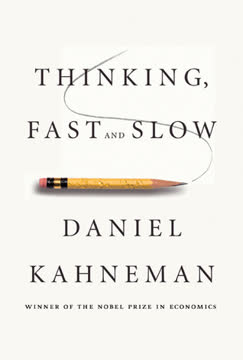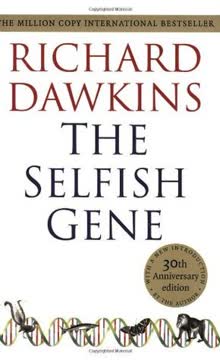Key Takeaways
1. Geographic factors shaped the unequal development of human societies
"History followed different courses for different peoples because of differences among peoples' environments, not because of biological differences among peoples themselves."
Environmental determinism. The book argues that the vastly different rates of development among human societies were primarily due to geographic and environmental factors, not innate differences between populations. These factors included:
- Availability of domesticable plants and animals
- Continental shape and orientation (east-west vs. north-south axis)
- Barriers to diffusion of ideas and technologies (deserts, mountains, oceans)
- Climate and ecology suitable for agriculture and population growth
These geographic advantages or disadvantages set societies on different trajectories, leading to disparities in technology, political organization, and economic power that persist to this day.
2. Food production was the catalyst for complex civilizations
"The adoption of food production exemplifies what is termed an autocatalytic process—one that catalyzes itself in a positive feedback cycle, going faster and faster once it has started."
Agricultural revolution. The transition from hunting and gathering to food production through agriculture and animal husbandry was the crucial turning point in human history. This shift allowed for:
- Population growth and densification
- Specialization of labor
- Development of technology and crafts
- Emergence of social hierarchies and complex political structures
Food production created food surpluses, which in turn supported larger populations and non-food-producing specialists like craftsmen, soldiers, and rulers. This positive feedback loop accelerated societal development and led to the rise of early civilizations.
3. Domestication of plants and animals drove societal advancement
"All crops arose from wild plant species. How did certain wild plants get turned into crops?"
Coevolution of humans and domesticates. The process of domestication was a long-term, often unconscious selection of wild species for traits beneficial to humans. Key points include:
- Domestication occurred independently in several world regions
- Some areas had more suitable wild species for domestication than others
- Animal domestication provided food, labor, transport, and fertilizer
- Plant domestication led to reliable food sources and surpluses
Major domesticates:
- Crops: wheat, rice, corn, potatoes
- Animals: sheep, goats, cattle, pigs, horses
The availability of domesticable species in Eurasia gave societies there a significant head start in developing complex civilizations.
4. Eurasia's east-west axis facilitated faster technological diffusion
"Eurasia's east-west axis permitted many of these Chinese animals and crops to spread westward in ancient times, while West Asian domesticates also spread eastward to China."
Continental orientation matters. Eurasia's predominantly east-west axis allowed for easier spread of crops, animals, and technologies across similar latitudes and climates. This diffusion was crucial because:
- Plants and animals adapted to one latitude could often thrive at similar latitudes
- Technologies and ideas could spread more readily between societies facing similar challenges
- The continuous landmass facilitated trade and cultural exchange
In contrast, the Americas' and Africa's north-south axes created barriers to diffusion, as crops and animals had to adapt to new climates as they spread. This difference in continental orientation contributed to Eurasia's faster technological and societal development.
5. Guns, germs, and steel gave Eurasians advantages in conquests
"The history of interactions among disparate peoples is what shaped the modern world through conquest, epidemics, and genocide."
Proximate causes of conquest. Eurasia's head start in food production and technological development led to three key advantages in their encounters with other societies:
- Guns: Superior weapons and military technology
- Germs: Immunity to diseases that devastated other populations
- Steel: Advanced metallurgy and tools
These advantages were not due to inherent superiority but rather the result of longer histories of dense populations, animal domestication, and technological exchange. The combination of these factors allowed Eurasians to dominate much of the world through conquest and colonization.
6. Writing systems evolved from economic and political needs
"Writing marched together with weapons, microbes, and centralized political organization as a modern agent of conquest."
Literacy as power. The development of writing systems was closely tied to the needs of complex societies:
- Record-keeping for trade and taxation
- Codification of laws and religious texts
- Communication over long distances
Writing systems typically evolved from:
- Pictographs (representing objects)
- Logograms (representing words or concepts)
- Syllabaries (representing syllables)
- Alphabets (representing individual sounds)
The spread of writing, often through conquest or trade, further accelerated the diffusion of knowledge and technologies between societies.
7. Societal complexity increased through competition and innovation
"All those differences among Polynesian societies developed, within a mere 3,200 years, as a consequence of differing environments and founder effects acting on populations with the same ancestral culture."
Divergent evolution of societies. As human populations spread and settled in diverse environments, they developed different social structures and technologies:
- Chiefdoms and states emerged from simpler tribal organizations
- Specialization of labor led to technological innovations
- Competition between societies drove further advancements
This process was not uniform, as illustrated by the diverse outcomes in Polynesian societies that developed from a common ancestral culture. Environmental constraints, population size, and isolation all played roles in determining the level of complexity a society could achieve.
8. Environmental differences led to diverse paths of development
"History's broad pattern ... is the differences between the long-term histories of peoples of different continents."
Ecological determinism. The book argues that environmental factors largely determined the trajectories of different societies:
- Fertile river valleys supported early agriculture (e.g., Mesopotamia, Nile, Indus)
- Island societies developed maritime technologies (e.g., Polynesia)
- Harsh environments limited population growth and technological development (e.g., Australia)
These environmental differences led to:
- Varying rates of population growth
- Different levels of societal complexity
- Unequal technological development
- Diverse cultural practices and beliefs
The interplay between environment and human societies created the diverse tapestry of cultures and civilizations observed throughout history.
9. Isolation and population size influenced technological progress
"In short, the history of China offers the key to the history of all of East Asia."
Factors in innovation. The book identifies two crucial factors in determining a society's rate of technological progress:
- Population size: Larger populations produce more potential inventors and innovations
- Connectedness: Societies with more external contacts can borrow and adapt technologies
China's large population and relative connectedness allowed it to become an early center of innovation. However, its periods of isolation led to stagnation. In contrast, small, isolated societies like Tasmania lost technologies over time.
Factors promoting innovation:
- Dense populations
- Trade networks
- Competition between societies
- Cultural openness to new ideas
The interplay of these factors explains why some societies became technological leaders while others lagged behind or even regressed.
Last updated:
FAQ
What's Guns, Germs, and Steel about?
- Explaining disparities: The book explores why different human societies developed at different rates, focusing on environmental, geographic, and biological factors rather than racial differences.
- Yali's question: The narrative is driven by a question from a New Guinean politician, Yali, about why Europeans had more material wealth ("cargo") than New Guineans.
- Interdisciplinary approach: Jared Diamond integrates insights from anthropology, biology, and history to provide a comprehensive understanding of human societal development.
Why should I read Guns, Germs, and Steel?
- Groundbreaking perspective: The book offers a non-racist explanation for inequalities in human societies, challenging traditional narratives of inherent superiority.
- Engaging storytelling: Diamond presents complex ideas in an accessible manner, making it a compelling read for those interested in history, sociology, or human evolution.
- Relevance to modern issues: Understanding historical roots of societal disparities can provide insights into contemporary global inequalities and conflicts.
What are the key takeaways of Guns, Germs, and Steel?
- Geography shapes history: Geographic factors significantly influenced the development of agriculture, technology, and political organization across continents.
- Food production's impact: The transition from hunting-gathering to food production enabled societies to support larger populations and complex political structures.
- Role of germs and technology: Infectious diseases and technological advancements, particularly in weaponry, played pivotal roles in European conquests over other societies.
How does Jared Diamond address Yali's question in Guns, Germs, and Steel?
- Geographic advantages: Societies with favorable geographic conditions, like the Fertile Crescent, had access to more domesticable species, leading to earlier agricultural development.
- Cultural diffusion: The east-west axis of Eurasia allowed for rapid diffusion of technology and ideas, unlike the north-south axes of Africa and the Americas.
- Historical context: Diamond provides a framework to understand how geographic and environmental factors shaped the fates of different societies over time.
How does Guns, Germs, and Steel explain the rise of agriculture?
- Environmental factors: Certain regions, like the Fertile Crescent, had the right conditions for early agriculture, including suitable wild plants and animals for domestication.
- Food surplus and complexity: Agriculture led to food surpluses, allowing populations to grow and societies to become more complex with specialized roles and trade.
- Cultural evolution: The transition to agriculture was a gradual process influenced by resource availability and the need for stability.
What role do germs play in Guns, Germs, and Steel?
- Infectious diseases as weapons: Germs, particularly those from densely populated agricultural societies, decimated indigenous populations upon contact with Europeans.
- Immunity disparities: Societies with a long history of agriculture developed immunities to certain diseases, giving them an advantage over less exposed populations.
- Historical consequences: Diseases like smallpox significantly altered history, facilitating European conquests and colonization efforts.
How does Jared Diamond address the concept of race in Guns, Germs, and Steel?
- Rejecting biological determinism: Diamond argues against racial differences as explanations for societal success, emphasizing environmental and geographic factors instead.
- Cultural evolution over time: All humans share a common ancestry, and cultural practices, rather than inherent traits, shape societal outcomes.
- Focus on ultimate causes: Diamond encourages looking for deeper explanations for historical disparities, moving beyond superficial racial theories.
What is the significance of the title Guns, Germs, and Steel?
- Symbolizing power dynamics: The title reflects the three main factors contributing to the dominance of certain societies: military technology (guns), infectious diseases (germs), and industry/agriculture (steel).
- Interconnectedness of factors: Each element in the title is linked, illustrating how they collectively shaped human history.
- Framework for understanding history: The title serves as a lens to analyze historical events and societal developments, emphasizing environmental and technological influences.
How does Guns, Germs, and Steel explain the differences in societal development?
- Environmental factors matter: Geographic conditions, such as climate and resources, led to different development rates. Eurasia had more domesticable plants and animals, facilitating growth.
- Domestication and population growth: Societies that domesticated plants and animals could support larger populations, allowing for complex social structures and technological advancements.
- Germs and conquests: Diseases from domesticated animals decimated populations during conquests, giving immune societies a significant advantage.
What are the best quotes from Guns, Germs, and Steel and what do they mean?
- “History followed different courses...”: This quote encapsulates the book's thesis that environmental factors, not racial superiority, explain historical disparities.
- “The question, ‘Why did human societies...’”: Diamond critiques traditional explanations for societal differences, advocating for a scientific understanding of history.
- “Food production was indirectly a prerequisite...”: Highlights the interconnectedness of agriculture and technological advancement, suggesting farming societies were better positioned for future developments.
How does Guns, Germs, and Steel relate to modern global issues?
- Understanding inequality: Provides historical context for contemporary disparities in wealth and power, encouraging consideration of long-term effects of historical developments.
- Lessons for future interactions: Examining the past offers insights into fostering cooperation and understanding in a globalized world.
- Relevance to current conflicts: Themes of conquest, colonization, and cultural exchange resonate with ongoing global tensions and colonial legacies.
How does Guns, Germs, and Steel explain the spread of technology?
- Geographic diffusion: Technology spreads more easily along east-west axes, as seen in Eurasia, facilitated by similar climates and day lengths.
- Cultural exchange: Trade and conquest played roles in technology spread; interacting societies were more likely to adopt and adapt new technologies.
- Population density: Higher densities led to more innovation and advancement; larger populations had more inventors and competition, driving progress.
Review Summary
Guns, Germs, and Steel explores why some societies developed more quickly than others, attributing differences to geographical and environmental factors rather than racial superiority. Diamond argues that Eurasian civilizations benefited from favorable plant and animal domestication opportunities, leading to technological advances. While praised for its thought-provoking ideas and extensive research, some reviewers criticize Diamond's deterministic approach and lack of attention to cultural factors. The book's accessible writing style and interdisciplinary approach make it engaging for readers interested in human history and development.
Civilizations Rise and Fall Series
Similar Books
Download PDF
Download EPUB
.epub digital book format is ideal for reading ebooks on phones, tablets, and e-readers.



















